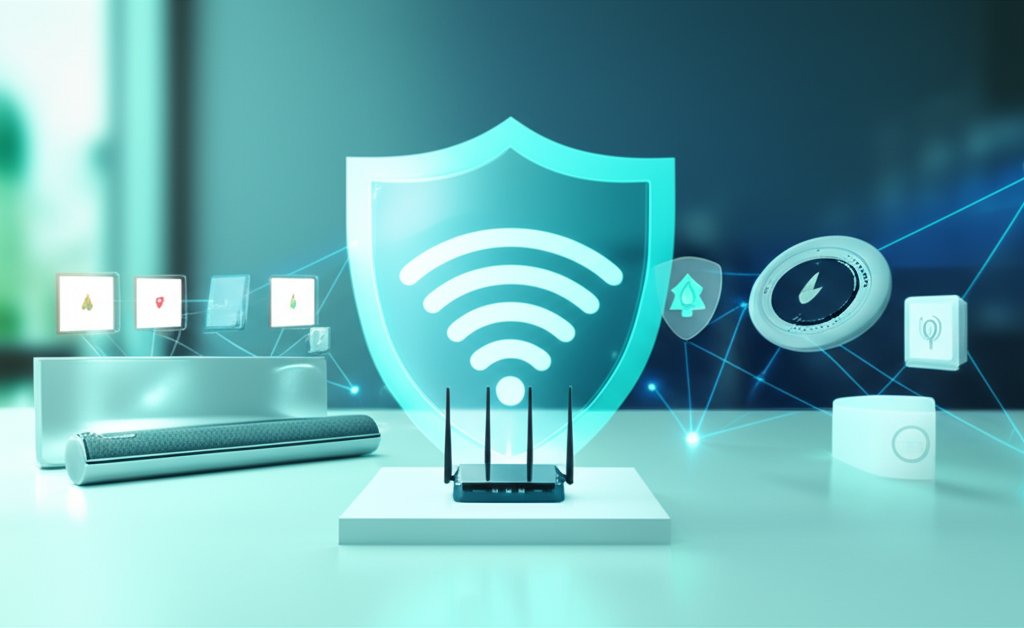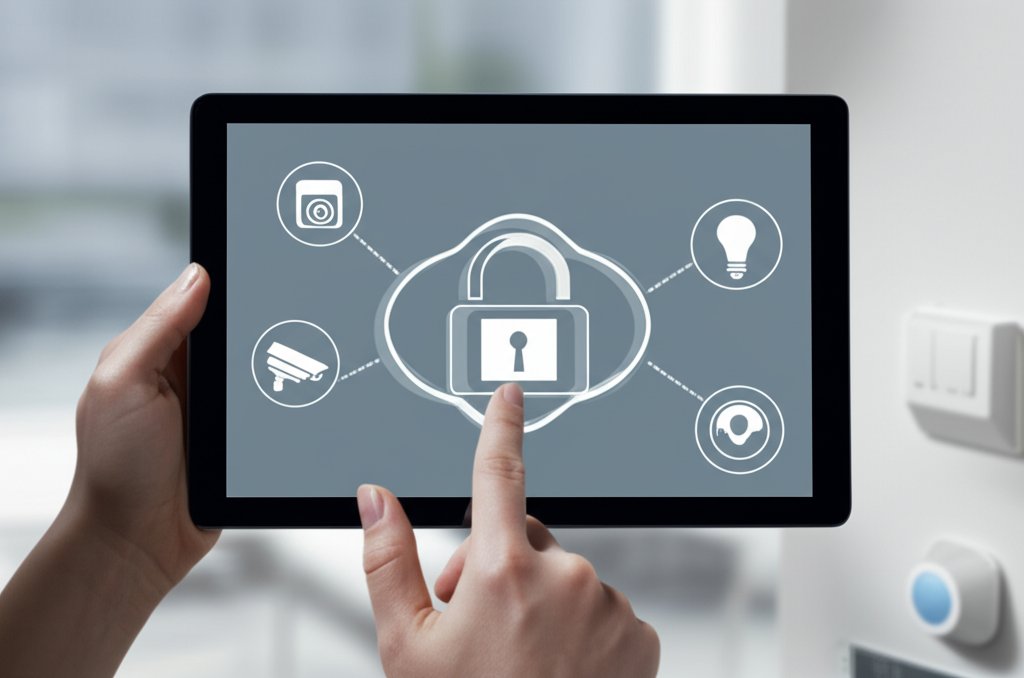Is Zero Trust Enough? A Practical Guide to Modern Network Security for Your Business & Home
In today’s interconnected digital landscape, navigating the constant barrage of evolving cyber threats can feel overwhelming. It’s easy to feel vulnerable, but my aim, as a security professional, is not to alarm you, but to empower you. We’ll translate these technical threats into understandable risks and equip you with practical solutions to protect your digital life, whether you’re safeguarding a small business or your home network.
Lately, “Zero Trust” security has become a significant topic of discussion. But is it truly the ultimate solution we’ve been seeking? Let’s delve into its core principles and discover how you can leverage them.
The “Castle and Moat” Approach: Why Traditional Security Falls Short
For decades, our default approach to network security mirrored the defense of a medieval castle. We erected formidable firewalls — our digital moats — designed to repel external threats. The prevailing assumption was that once someone or something successfully breached these outer defenses and made it “inside the castle walls,” they were inherently trustworthy and granted free rein. This perimeter-based security model offered adequate protection when our “castles” were simpler: a single office, a limited number of desktop computers, and all critical data stored locally.
However, our modern digital existence is far more complex. We now work remotely from diverse locations, access sensitive company data from personal devices, and rely on cloud services distributed globally. Our valuable data no longer resides neatly behind a single firewall; it’s dispersed across a vast, interconnected ecosystem. The “castle and moat” model, in this context, is woefully inadequate. A single insider threat, a compromised personal laptop, or a cleverly executed phishing attack could allow an adversary to bypass that initial perimeter. Once inside, they could then move laterally and explore your entire network largely unchallenged. This scenario represents a significant and unsettling vulnerability.
What Exactly is Zero Trust? (And Why It’s Indispensable)
This is precisely where Zero Trust revolutionizes security thinking. At its core, Zero Trust represents a fundamental philosophical shift: “Never trust, always verify.” This means that no entity — whether a user, device, or application, inside or outside your network — is granted inherent trust. Every single access attempt must be meticulously and explicitly verified before any access is granted. Zero Trust isn’t a product you can simply purchase; it’s a strategic, architectural approach to security that you implement and enforce across your entire digital environment.
Let’s unpack its three foundational pillars, focusing on how they are practically applied:
-
Explicit Verification: Think of it like needing to present your ID and state your precise purpose at every single door within a secure facility, even if you’ve entered that building countless times before. This is explicit verification in action. We’re rigorously checking multiple factors for every access request:
- Who you are: Verifying identity using robust identity providers and strong authentication methods like Multi-Factor Authentication (MFA).
- What device you’re using: Assessing the health and compliance of the device (e.g., is it patched, free of malware, encrypted?).
- Where you’re coming from: Evaluating the network location and IP address for anomalies.
- What you’re trying to access: Ensuring the requested resource is appropriate for the verified identity and device posture.
This robust, continuous process is central to Zero-Trust Identity architecture, ensuring every interaction is authenticated and authorized dynamically.
-
Least Privilege Access: This principle dictates that individuals and devices are granted only the bare minimum level of access required to perform their specific tasks, and only for the duration it’s needed. No more universal “master keys”! If an employee needs access to a specific project folder, that’s precisely all they get — not access to the entire file server.
- Role-Based Access Control (RBAC): Granting permissions based on defined job functions.
- Just-in-Time (JIT) Access: Providing temporary, elevated access for a specific task, which automatically revokes after completion.
- Micro-segmentation: Dividing networks into small, isolated zones, controlling traffic between them at a granular level. This severely limits an attacker’s ability to move laterally even if they compromise a single segment.
This minimizes the potential damage an attacker can inflict if they manage to compromise a single account or device.
-
Assume Breach: This mindset acknowledges that, despite our best efforts, a breach is always a possibility. It’s akin to having smoke detectors and fire extinguishers even in a highly fire-resistant building. This principle drives us to:
- Continuous Monitoring: Constantly scrutinizing all network traffic, user behavior, and device activity for anomalies or indicators of compromise.
- Incident Response Planning: Developing clear, actionable plans for quickly detecting, containing, eradicating, and recovering from security incidents.
- Security Analytics: Leveraging tools to collect and analyze security logs to identify patterns that might indicate an attack.
By assuming a breach is inevitable, we shift our focus from just prevention to also prioritizing rapid detection and containment.
The true strength of this Zero Trust Architecture lies in its ability to significantly curtail an attacker’s lateral movement within your network, even if they manage to gain an initial foothold.
Zero Trust for Small Businesses and Home Users: Practical Steps You Can Take
While Zero Trust might sound like an enterprise-level endeavor, its fundamental principles are incredibly powerful and directly applicable for small businesses and even individual home users. Here’s how you can proactively begin your Zero Trust journey:
For Both Business & Home:
-
Identity Verification is Paramount:
- Embrace a Reputable Password Manager: Please, use unique, strong, and complex passwords for every single online account. A good password manager makes this not just feasible, but effortless and essential.
- Multi-Factor Authentication (MFA) – Enable It Everywhere: This is non-negotiable and your absolute best defense against stolen credentials. Enabling MFA means that even if an attacker compromises your password, they still require a second verification factor (like a code from an authenticator app, a fingerprint, or a physical security key) to gain access. It’s a simple yet profoundly effective layer of defense — make it your default.
-
Secure Your Devices & Keep Them Healthy:
- Prioritize Software Updates: Those “update available” notifications are not just annoyances; they frequently contain critical security patches that close vulnerabilities attackers exploit. Install updates for your operating system (Windows, macOS, iOS, Android), web browsers, and all applications promptly.
- Deploy Robust Antivirus/Antimalware Software: A reputable endpoint security solution acts as your digital bouncer, continuously scanning for and blocking malicious software before it can execute. Keep its definitions updated.
- Implement Basic Device Security: Utilize strong screen locks (PINs, patterns, biometrics) on all mobile devices and computers. Consider enabling full-disk encryption (BitLocker for Windows, FileVault for macOS) on laptops and phones, especially those containing sensitive data.
-
Understand & Protect Your Data:
- Data Inventory and Classification: For businesses, know exactly what sensitive data you possess, where it’s stored (locally, cloud services), and who has access to it. For home users, identify your most valuable digital assets (photos, financial documents) and prioritize their protection.
- Robust Backup Strategies: Implement regular, verifiable backups of all critical data. Ensure backups are stored securely and, ideally, offsite or offline. In the event of ransomware, hardware failure, or accidental deletion, accessible backups are your lifeline.
Specific for Small Businesses:
-
Implement Least Privilege for Employees:
- Role-Based Access Control (RBAC): Define clear roles within your organization and assign access permissions strictly based on those roles. Employees should only access the resources absolutely necessary for their job functions.
- Network Micro-segmentation: Work with an IT professional to logically segment your network. For example, separate your point-of-sale systems from your administrative network, or segment by department. This prevents an attacker who compromises one part of your network from easily moving to others.
-
Secure Remote Access:
- Modern VPNs or ZTNA Solutions: If your business relies on remote access to internal resources, utilize a secure Virtual Private Network (VPN) with strong authentication. Even better, consider a Zero Trust Network Access (ZTNA) solution, which applies Zero Trust principles to remote connectivity, verifying users and devices for *every* access attempt, not just once at the perimeter.
- Employee Security Awareness Training: Your team is arguably your strongest — or weakest — link. Regular and engaging security awareness training is crucial. Educate employees on recognizing phishing attempts, safe browsing habits, identifying social engineering tactics, and the importance of reporting suspicious activity. Empower them to be your first line of defense.
Is Zero Trust Truly Enough? Building Beyond the Baseline
Zero Trust security undeniably provides an exceptionally strong foundation, effectively establishing a new cybersecurity baseline and significantly mitigating risk across your digital landscape. But is it a definitive “silver bullet”? Realistically, no single security strategy can claim that title. Here’s why our vigilance and efforts must extend beyond even Zero Trust:
- The Enduring “Human Element”: We are, after all, only human. Phishing attacks, sophisticated social engineering, and simple human error can still, unfortunately, bypass even the most robust technical controls. An attacker might trick an employee into voluntarily revealing their verified credentials, effectively handing them the “keys” to authorized access. Security is as much about people as it is about technology.
- Evolving Threats & Attack Surfaces: Cybercriminals are relentlessly innovative. New forms of malware, highly sophisticated AI-powered attacks that can mimic legitimate users with unsettling accuracy, and complex supply chain vulnerabilities continue to emerge. While Zero Trust is designed to limit impact, it must continuously evolve alongside these threats, adapting its verification mechanisms and scope.
- Complexity and Continuous Effort: For larger or highly intricate environments, achieving a full, mature Zero Trust implementation can be a substantial undertaking. It demands continuous investment in technology, policy refinement, monitoring, and adaptation. This ongoing effort and expertise can be particularly challenging for organizations without dedicated, in-house IT security teams. Zero Trust is a journey, not a destination.
Beyond Zero Trust: Building a Resilient Security Posture
If Zero Trust isn’t the final destination, what steps should we take next? It’s about strategically building upon that robust foundation with complementary layers of defense and a forward-thinking, proactive mindset:
- Continuous Monitoring & Advanced Threat Intelligence: We must maintain a state of constant vigilance. This involves implementing systems that continuously monitor all network activity for anomalies, suspicious behaviors, and indicators of compromise. Integrating real-time threat intelligence feeds — data on emerging threats, attack techniques, and vulnerabilities — allows us to identify and respond to new dangers as they surface, often before they can cause significant harm. If something looks out of place, we need to know immediately.
- Security Automation & Orchestration: Automating security tasks is critical for detecting and responding to threats far faster than manual processes. This includes automated vulnerability scanning, policy enforcement, incident triage, and even initial containment actions. Think of it like a smart alarm system that doesn’t just buzz, but also calls for help and takes initial protective measures.
- Layered Security (Defense in Depth): Zero Trust is a crucial layer, but it’s not the only one. A truly resilient security posture involves multiple, overlapping security controls. This includes robust encryption for data at rest and in transit, comprehensive backup and recovery strategies, strong endpoint detection and response (EDR) solutions, and even physical security measures for devices and infrastructure. Each layer adds another significant hurdle for an attacker.
- Leveraging AI in Cybersecurity (Strategically): Artificial intelligence is a powerful, double-edged sword. On one hand, it’s assisting security teams by analyzing vast quantities of data to detect sophisticated threats — such as advanced persistent threats (APTs) and zero-day exploits — much faster than human analysis alone. On the other hand, malicious actors are also harnessing AI to craft more convincing phishing campaigns, generate more elusive malware, and automate attacks. Staying ahead means understanding both the defensive and offensive applications of AI.
- Considering Managed Security Services (for SMBs): For small and medium-sized businesses that often lack the resources for a dedicated in-house cybersecurity team, partnering with a Managed Security Service Provider (MSSP) can be a transformative solution. MSSPs offer expert-level protection, continuous monitoring, advanced threat detection, and rapid incident response — without you needing to build an entire security operation from scratch. This can be especially valuable when navigating the complexities of a comprehensive Zero Trust Architecture for hybrid security and compliance requirements.
Your Path to a Safer Digital Future: Take Control Today
The journey toward truly securing your digital world is an ongoing commitment, not a one-time task. Cyber threats are in constant flux, and our defenses must evolve dynamically to match them.
Zero Trust offers a powerful, necessary, and modern framework for securing your network. By consciously adopting its core principles — explicit verification, least privilege access, and assuming breach — you are taking significant and decisive strides toward creating a far more secure environment for both your small business and your home. Don’t feel overwhelmed by the scope; instead, commit to starting small, building a solid foundation, and then strategically layering on additional, complementary protections.
Your digital future is within your control. Take action today:
- Review your current security practices, honestly assessing where you can improve.
- Implement Multi-Factor Authentication (MFA) everywhere you possibly can — it’s your single most effective defense against stolen credentials.
- Start using a reputable password manager to ensure unique, strong passwords for every account.
- Make a commitment to continuously educate yourself, your family, and your team on the latest cyber threats and safe online practices.
Empower yourself, verify everything, and build a resilient digital future.









